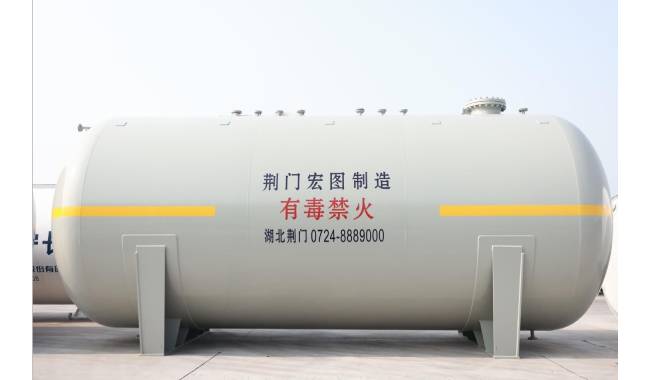Have you ever seen a square LPG tank? Have you ever seen a square bucket filled with water or oil? Maybe not. Because they're not square at all. But have you ever wondered why they are designed to be cylinders?
The storage tank is one of the important equipment for liquefied petroleum gas storage. The main components of liquefied petroleum gas are ethylene, ethane, propane, propylene, butane, butene, etc. These chemical components are corrosive to process equipment. In the production process, the medium filled with equipment also has a high temperature, high pressure, high vacuum, flammable and explosive characteristics, and even toxic gases or liquids. According to the above characteristics, we should determine the structure, process parameters, and parts of the oil and gas storage tank. LPG tank is a normal temperature fixed pressure vessel, single layer tank structure, dedicated to the storage of liquefied petroleum gas. The container is made of a low alloy steel plate with excellent performance, safety, and reliability.
1. Pressure is the main reason for the round or cylindrical shape of the LPG storage tank. The circular shape will make the surface tension evenly distributed, like squeezing an egg. Hold the egg with your hand and pinch it hard to find that you can't break it, because the structure of the egg shares the pressure for the whole, so the egg will not break. The same principle applies to LPG storage tanks. When a liquid or gas is placed into a container or tank, maximum pressure is applied to its corners.
Now, if the cylinders are square, they also have four corners. In this case, a lot of pressure builds up internally. This increases the risk of cylinder leakage or rupture. In a circular or cylindrical shape, the pressure is uniform throughout the cylinder. For this purpose, LPG storage tanks are made round or cylindrical.
2. In addition, we have reason to believe this particular design was chosen for economic reasons. Geometry tells us that the area of a circle is larger than that of any other shape. So, if you have the same amount of material and you want to make something with the largest volume, obviously, the circle is the most suitable shape. It is no wonder that the gas pipe used to transport gas and the water pipe used to transport water are made of round tubes. In fact, this is an imitation of the natural phenomenon.
CIMC ENRIC has the design & fabrication capacity of LPG stationary storage tanks including above-ground tanks, underground tanks, and mounded tanks, etc. All kinds of tanks could be customized according to the customers' requirements.

3. When the cylindrical tanker is loaded on the vehicle, it lowers its center of gravity. This keeps the vehicle stable and does not pose any risk of accidents. At the same time, it will minimize the static electricity generated by shaking during transportation. Every time the oil in the tanker collides with the oil tank, it will produce static electricity. The greater the impact, the more it will be produced. The cylindrical shape can effectively slow down the impact force and reduce the possibility of accumulated electrostatic explosion.
Considering the problem of transportation, our company also provides transportation-related products(LPG Bobtail Trucks, LPG semi-trailers).
CIMC ENRIC - A leading supplier of storage and process containers, specializing in LNG and LPG/propane, butane, and anhydrous ammonia/NH3 bullet tanks and associated equipment. We also offer the most comprehensive range of related equipment including LPG and NH3 pumps, compressors, valves, liquid transfer and metering systems, evaporators, mixing systems, and much more. We also offer storage solutions for LPG (liquefied petroleum gas), propane, butane, pentane, ammonia, anhydrous ammonia, and other gaseous products.